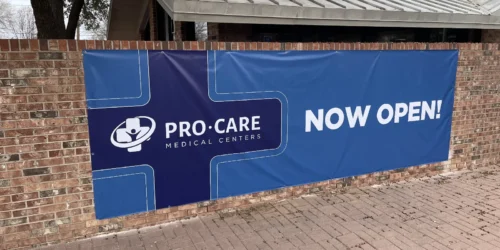You’re stopped at a red light when—BAM—a car slams into you. Adrenaline spikes but you feel fine… At first. The next day your neck is stiff, your back aches, and headaches are setting in. What happened?
This is where MOI (or mechanism of injury) comes in.
It’s the way an injury occurs—whether from a car crash, a fall, or another impact. Understanding the mechanism of injury helps medical professionals, such as our car accident doctors and personal injury specialists, assess trauma, even before symptoms fully appear.
In this guide, we’ll break down what MOI means, why it’s important, and how it applies to car accident recovery. You’ll learn about the major mechanisms of injury, real-world MOI examples, and why recognizing it can lead to better treatment and faster healing.
What Does Mechanism of Injury (MOI) Mean in Medical Terms?
In medical terms, mechanism of injury (or MOI for short) refers to the way an injury occurs, specifically how forces act on the body to cause trauma. That means the mechanism of injury helps doctors, chiropractors, and first responders determine the severity of an injury, predict possible complications, and guide treatment decisions—even before symptoms fully appear.
In car accidents, energy transfer and impact forces dictate injury patterns. A low-speed fender bender may cause minor soft tissue strain, while a high-speed crash can lead to fractures, spinal injuries, or brain trauma. By analyzing the mechanism of injury, medical professionals can anticipate injury patterns based on crash dynamics and provide targeted care.
For example, in a rear-end car accident, the sudden forward motion followed by a snapback can cause whiplash, spinal misalignment, and soft tissue damage. Understanding the forces at play allows doctors to assess not just visible injuries, but also hidden ones like concussions or internal damage.
Why Is the Mechanism of Injury Important?
Unlike just looking at symptoms or X-rays alone, identifying the injury mechanism provides a clearer picture of potential trauma. Here’s why that matters:
- Early Detection of Hidden Injuries: Some injuries, like whiplash, concussions, or microtears in soft tissue, may not show up immediately. MOI helps predict and diagnose these before they worsen.
- Guides Proper Treatment: A chiropractor treating a car accident injury will adjust their approach based on how the trauma occurred, ensuring more precise care.
- Improves Injury Severity Assessment: Understanding the force, angle, and impact helps medical professionals gauge whether injuries are minor or require urgent attention.
- Supports Legal and Insurance Claims: Mechanism of injury documentation strengthens medical records, making it easier to prove injury severity in accident claims.
Mechanism of Injury Components
Mechanism of injury consists of two primary factors:
- The mechanism and energies involved, which includes:
- The type of force (blunt trauma, acceleration-deceleration, rotational, penetrating, etc.)
- The amount of kinetic energy transferred to the body
- The direction and duration of impact (e.g., side-impact crashes vs. head-on collisions)
- The strength of the tissues subjected to the injury which covers:
- How different tissues react differently to trauma—bones may fracture, muscles may tear, ligaments may overstretch
- Age, pre-existing conditions, and overall health affect how well the body absorbs impact
5 Major Mechanisms of Injury Breakdown
When assessing trauma, medical professionals classify injuries into five major mechanisms of injury based on how force is applied to the body. Each mechanism has distinct patterns and risks, particularly in car accidents, where multiple forces can act simultaneously.
Below, we’ve broken down the five major injury mechanisms to help you better understand:
| Mechanism of Injury | Description | Common Injuries |
|---|---|---|
| 1. Blunt Force Trauma | Impact without penetration, common in car crashes. | Whiplash, rib fractures, internal bleeding. |
| 2. Penetrating Trauma | Object pierces the body, causing open wounds. | Lacerations, puncture wounds, organ damage. |
| 3. Acceleration-Deceleration Injuries | Body moves suddenly then stops, leading to internal damage. | Traumatic brain injury (TBI), spinal injuries, whiplash. |
| 4. Rotational or Shear Forces | Twisting forces causing severe brain, spine, or joint injuries. | Diffuse axonal injury (DAI), spinal cord damage, ligament tears. |
| 5. Crush Injuries | Compression between objects, damaging soft tissue and bones. | Compartment syndrome, fractures, tissue necrosis. |
Mechanism of Injury Examples
Mechanism of injury plays a crucial role in assessing trauma severity, even when injuries aren’t immediately obvious. Here are a few real-world examples of how MOI helps medical professionals anticipate and treat injuries:
- Rear-End Car Accident: A driver struck from behind may feel fine at first but later develops whiplash, spinal misalignment, or a concussion due to the rapid acceleration-deceleration forces. Mechanism of injury helps predict these issues before they worsen.
- Fall from a Ladder: A fall from six feet vs. twenty feet leads to drastically different injury risks. The height, landing surface, and body position determine whether someone has simple bruises or life-threatening fractures.
- Sports Collision: A football player taking a helmet-to-helmet hit may walk off the field seemingly fine, but mechanism of injury suggests checking for concussions or cervical spine injuries due to rotational forces.
From Mechanism of Injury to Recovery: How We Can Help
As you can see, by analyzing the mechanism of injury, doctors and chiropractors can make faster, more accurate diagnoses, ensuring patients receive the right treatment before complications arise. Whether it’s whiplash from a rear-end crash, a concussion from a fall, or joint damage from a sports injury, mechanism of injury plays a key role in ensuring you receive the right care as soon as possible.
If you’ve been in a car accident, don’t wait for pain to take over. Our chiropractic and car accident injury specialists are here to help you heal faster, reduce pain, and regain mobility. We serve patients across Texas with personalized treatment plans designed for long-term recovery.
Schedule an appointment online today or visit our nearest clinic to get started on your path to recovery.



